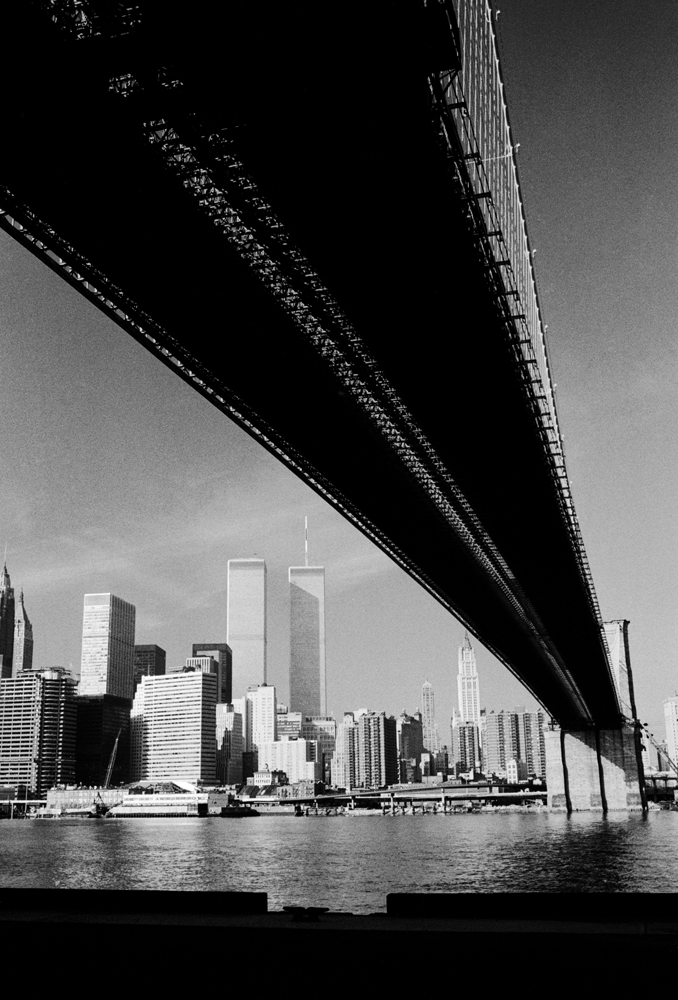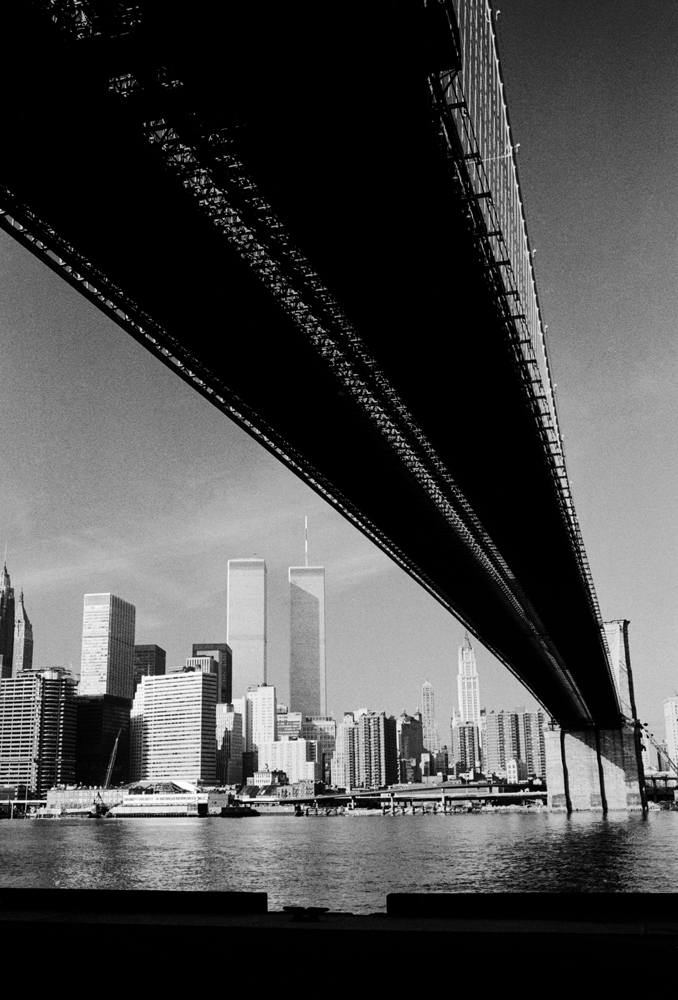
Say you’ve lived in New York for a while. Ten years. Twenty years. Maybe your whole life. You’re coming out of the subway, in pretty much any borough. You’re a little turned around when you get to the street. You’re not sure which way is north, which is south. Without thinking about it, you gaze around for the one landmark (or rather, the two landmarks) that always helped orient you in the past—those enormous, companionable markers that silently indicated, at a glance: This is south. This is Lower Manhattan. Get your bearings.
Then you remember: the Twin Towers are gone. So you cast about for some other clue, some other sign that will tell you where to turn, and as you head off in the right direction, the vanished towers hover at the edge of your thoughts—a ghost image that, like Art Spiegelman and Françoise Mouly’s famous black-on-black New Yorker cover, seems to perpetually fade, but never really goes away.
The towers anchored Lower Manhattan for almost three decades. While they stood, no one would have characterized them as “beloved,” or even as terribly well-liked. They were too gargantuan, too lacking in character (it seemed) to elicit the sort of affection—near-reverence, even—that structures like the Empire State Building or the Brooklyn Bridge can stir in almost anyone who encounters them. The Twin Towers were sleek, utilitarian monoliths, each one possessing all the personality of an I-beam. They were unavoidable. They were unlovable.
Gradually, though, people did warm to the pair. There were times, for example, when the setting sun burnished the soaring glass sides of those two buildings in such a way that they—or the reddish-gold highlights shining on them, at least—were genuinely beautiful. And seen from a distance, from the east or from the west, the Twin Towers added a certain balance to the island’s famous skyline—a modern counterpoint to the celebrated skyscrapers (the Chrysler and Empire State buildings, Citicorp Center and the rest) that rise above midtown like so many self-satisfied urban stars.
The Twin Towers, located several miles south of their famous cousins, were a constant visual reminder to the rest of the region that not only did Lower Manhattan matter: it was, in some ways, the true center of the metropolis.
[See the gallery, “Lower Manhattan: Where New York Was Born”]
The towers are gone now. A new skyscraper, One World Trade, has risen in the spot where the Twin Towers once stood, and the skyline of the city has again been reshaped, transformed—as it always has been, and always will be.
And who knows? Maybe future generations of commuters and tourists will walk out of subway stations all over town, a little turned around, a little confused, and will automatically gaze about for the one landmark that has always helped orient them—an enormous, companionable marker that silently indicates, at a glance: This is south. This is Lower Manhattan. Get your bearings.

More Must-Reads from TIME
- How Donald Trump Won
- The Best Inventions of 2024
- Why Sleep Is the Key to Living Longer
- Robert Zemeckis Just Wants to Move You
- How to Break 8 Toxic Communication Habits
- Nicola Coughlan Bet on Herself—And Won
- Why Vinegar Is So Good for You
- Meet TIME's Newest Class of Next Generation Leaders
Contact us at letters@time.com